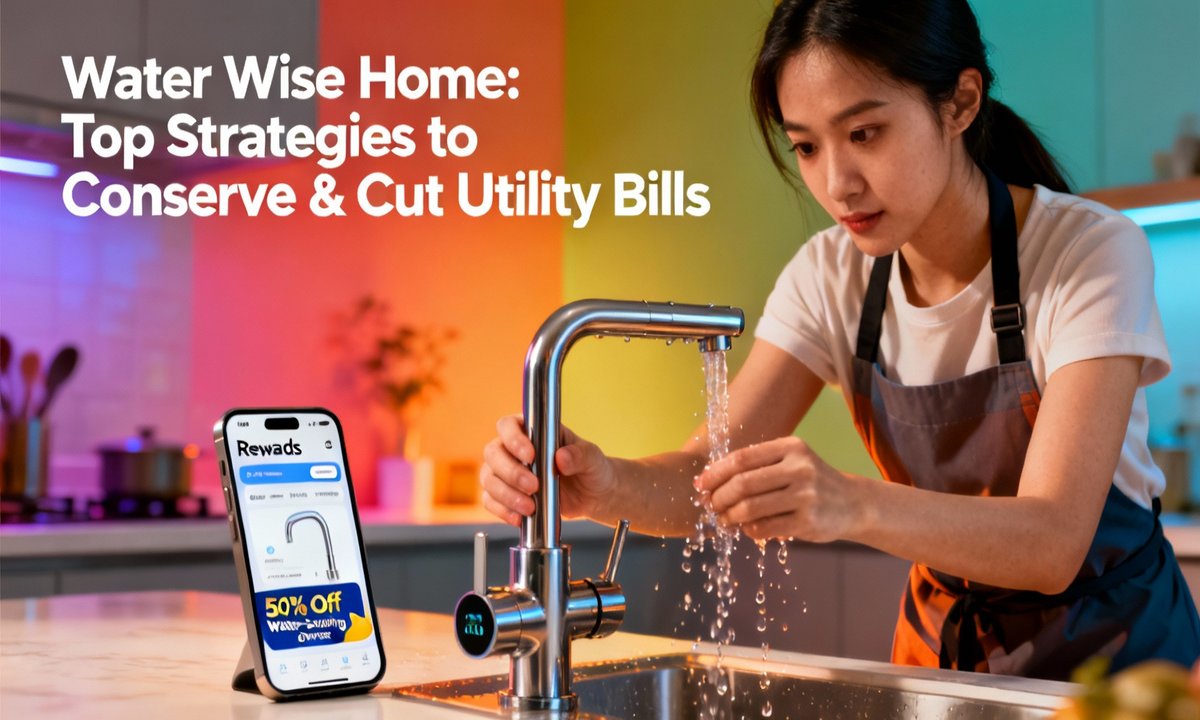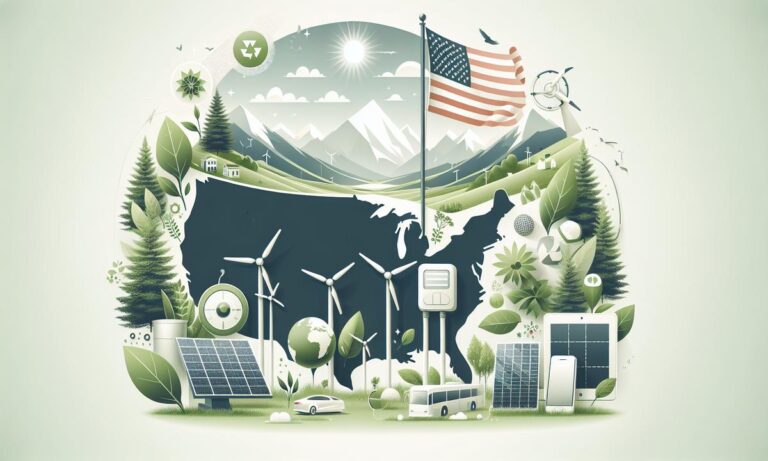Water conservation is more than an environmental imperative; it’s a strategic move for homeowners to significantly reduce utility bills and enhance home sustainability. Embracing water-wise practices integrates eco-friendliness into your daily life, offering both financial benefits and a positive impact on our planet. This approach ensures your home is future-ready and contributes to a more resilient community.
The Value of a Water-Wise Home
Saving water at home extends beyond merely lowering your monthly expenses. It actively lessens the burden on local water resources, protects natural environments, and bolsters community resilience, especially during periods of drought. Simple improvements in water efficiency can lead to approximately 30% savings on indoor water consumption, visibly decreasing both water and energy expenditures.
If you are already focused on reducing energy bills with various upgrades, consider exploring Smart Home Upgrades for Energy Savings. Integrating water-saving habits and technologies offers one of the best returns on investment for homeowners aiming to cut overall utility costs effectively.
Smart Strategies for Indoor Water Savings
Tackling Leaks and Upgrading Fixtures
A single drip per second can surprisingly waste over 3,000 gallons annually. Leaks from faucets, toilets, and other household systems are often unnoticed culprits silently increasing your bills, as detailed by Michigan Saves. Regularly check for these hidden leaks and address them promptly. Upgrading to WaterSense labeled faucets and low-flow showerheads can reduce water flow by up to 60% without compromising comfort or pressure. Walnut Valley Water District suggests these simple low-flow fixtures are an affordable initial step, with savings beginning immediately.
Modernizing Bathrooms and Appliances
Toilet flushes typically account for the largest share of indoor water use. Homes with older toilets, particularly those from before 1992, can achieve substantial savings by installing high-efficiency models, potentially saving up to 16,000 gallons per year for an average family of four, according to Energy Star. Similarly, switching to ENERGY STAR certified washing machines and dishwashers dramatically reduces water consumption, sometimes by as much as 24 gallons per cycle. Always look for WaterSense labels on showerheads and ensure appliances are run only with full loads for maximum efficiency, a tip echoed by the Walnut Valley Water District. For additional eco-friendly home enhancements, consider reviewing Sustainable Home: Eco-Friendly Products for a Greener Living Space.
Developing Mindful Water Habits
Simple changes in your daily routine can yield remarkable results. Turning off the tap while brushing your teeth or shaving is an easy habit that can save 200 gallons each month, a simple yet effective strategy highlighted by Michigan Saves. Keep your showers brief and only use washing machines and dishwashers when they are fully loaded. Engaging every family member in these conscious water habits can lead to significant cumulative savings over time.
Optimizing Outdoor Water Use
Your outdoor space can represent up to half of your home’s total water consumption. Implementing intelligent outdoor strategies can transform your landscape into a water-saving asset, all while preserving its aesthetic appeal and value.
Advanced Irrigation and Rainwater Harvesting
Consider installing smart irrigation systems that automatically adjust their schedules based on local weather conditions and soil moisture levels. Watering during the coolest parts of the day, such as early morning or late evening, minimizes evaporation and can reduce outdoor water usage by 50%, a strategy supported by the Walnut Valley Water District. Furthermore, rain barrels offer a sustainable way to collect free rainwater for your gardens and lawns, significantly decreasing your reliance on tap water. It’s also wise to regularly inspect sprinkler heads for proper alignment and any leaks, similar to how you would manage HVAC maintenance for summer savings.
Choosing Water-Smart Landscaping
Embrace native plants and xeriscaping principles in your garden design. These beautiful landscapes often require less than half the irrigation compared to traditional lawns, thriving naturally in your local climate. Opting for drought-resistant grasses, applying mulch to garden beds, and grouping plants with similar watering needs will transform your yard into a truly water-conserving masterpiece.
Maintaining Your Irrigation System
A finely tuned irrigation system is fundamental to outdoor water efficiency. Promptly replace or repair any leaking lines, broken sprinkler heads, or outdated controllers with WaterSense labeled models to ensure water is applied precisely when and where needed. Enhancing your system with rain shutoff devices and soil moisture sensors can further prevent wasteful overwatering, ensuring optimal plant health with minimal water use, a point emphasized by Energy Star.
Unlocking Financial Gains and Incentives
Realizing Significant Cost Savings
Implementing efficient plumbing solutions and high-performance appliances at home directly reduces both your water and energy bills. Families can conserve nearly 3,500 gallons of water and 410 kWh of energy annually simply by installing efficient showerheads and aerators, according to Energy Star. These upgrades translate into consistent, compounding savings that appear on every billing cycle, making a substantial difference in your household budget. Water conservation serves as a powerful component of Frugal Living Hacks to Save Thousands this Year, proving that combining rebates, smart habits, and affordable upgrades is a clear path to long-term financial relief.
Exploring Rebates and Local Programs
Many communities and local water districts actively support water-smart initiatives by offering rebates for specific upgrades. These can include converting traditional lawns to water-efficient landscapes, installing smart irrigation controllers, or even adding covers to pools, as highlighted by the Walnut Valley Water District. Such rebates often cover a significant portion of your initial investment, allowing your upgrades to pay for themselves much more quickly. Investigate available state and local programs, watch for seasonal retail discounts, and consider green bank financing options to make your eco-friendly home renovations even more accessible, a point underscored by Michigan Saves.
Steps to Create Your Water-Efficient Home
Getting Started with Practical Actions
Creating a water-wise home begins with a few straightforward steps.
1. Start with a Leak Check: Inspect all faucets, toilets, and visible pipes at least once every season to catch issues early.
2. Update Fixtures and Appliances: Prioritize replacing older, inefficient fixtures and models; always look for WaterSense and ENERGY STAR labels for assurance.
3. Map Outdoor Water Use: Walk your property to identify any areas of overwatering or leaks, and update irrigation controllers as necessary.
4. Change Habits: Encourage your household to adopt mindful water practices; tracking use can add an engaging element to savings.
5. Seek Out Rebates: Visit your local utility or water district website, and explore the EPA’s WaterSense Program for current incentives.
For more comprehensive, whole-home strategies, consider combining water efficiency with year-round energy-proofing tips. Integrating these systems offers the most reliable route to a sustainable and cost-effective lifestyle.
Embracing a water-wise home means investing in a future-ready, sustainable way of living. The strategies outlined are simple, cost-effective, and often supported by various rebates and incentives designed to assist your transition. Begin today: assess your home’s current water usage, make those initial upgrades, and enjoy the lasting benefits of conserving water, energy, and money. Every gallon saved and dollar kept contributes to a more resilient household and community. Are you ready to make a positive change at home? Both your budget and the planet will certainly appreciate your efforts.




